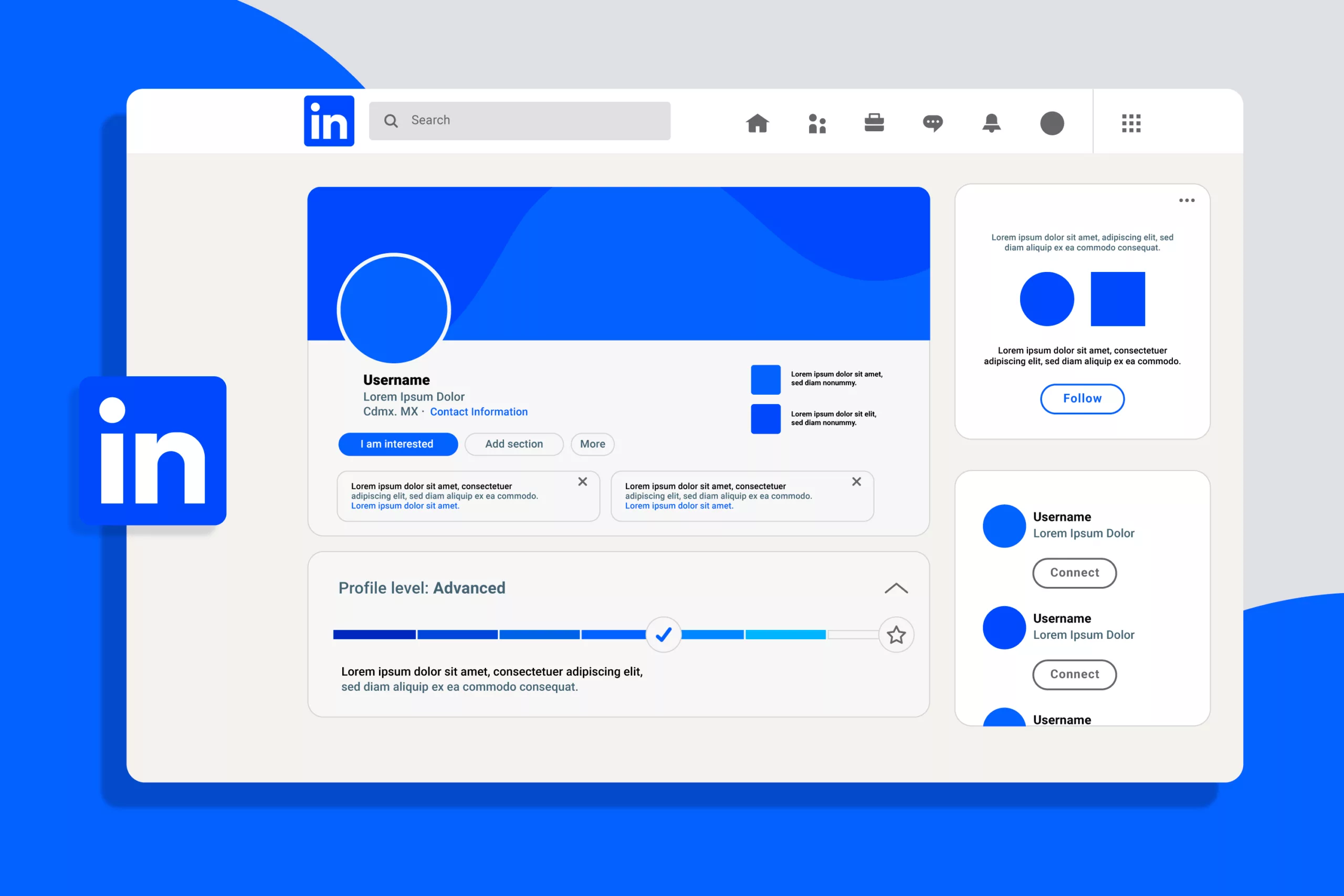As the world slowly inches toward being increasingly digital, having a strong online presence is crucial for professionals looking to advance their careers. One platform that has emerged as a powerful tool for networking, job searching, and showcasing expertise is LinkedIn.
However, in order to reap the benefits of this platform, it’s important to have a LinkedIn profile that stands out and effectively communicates your skills and accomplishments. This process of crafting a compelling profile is known as LinkedIn profile optimization, and it can make all the difference in attracting connections and opportunities.
To further your LinkedIn profile optimisation, start by focusing on your headline and summary. These sections should capture the attention of anyone viewing your profile and convey your unique value proposition. Be sure to use keywords relevant to your industry and include specific examples of your achievements to demonstrate your expertise.
Having an up to date and well organized experience section is the next step. Use bullet points to highlight your responsibilities and accomplishments in each role, and quantify your achievements whenever possible.
Don’t forget about your skills section, which is another important part of your LinkedIn profile. Be strategic about the skills you list and make sure they align with your career goals. Additionally, consider asking for endorsements from colleagues or clients to add credibility to your profile.
Finally, be active on the platform by engaging with posts, sharing relevant content, and joining groups related to your industry. This will help you expand your network and position yourself as a thought leader in your field.
Optimize your headline with relevant keywords
The headline is the most important part in the optimisation of you LinkedIn profile as more often than not, it’s often the first thing people see when they come across your profile. As they say, first impressions are the last impressions. So, make sure your headline includes relevant keywords that reflect your expertise and industry. For example, if you’re a digital marketer, you could include keywords such as “digital marketing strategist” or “SEO specialist”. This will help your profile appear in search results when people are looking for professionals with your skills.
Use a professional profile photo
Another very important aspect is your profile photo. It needs to be equal parts professional and approachable.

Our tailored customer-centric approach in marketing maximizes sales.
Search Engine Marketing:Drive traffic, boost conversions & grow your business
Social Media Marketing:Maximize your social media potential & engage with your audience
LinkedIn Marketing:Unlock the power of LinkedIn!
Video Production & Photography:Elevate your business with captivating visuals
Always pick a high quality photo that is taken on a neutral background. Avoid using selfies or casual photos, as they can appear unprofessional. Instead, opt for a headshot or a photo taken in a work environment that represents your industry or profession.It’s also important to dress appropriately in your profile photo. Choose an outfit that aligns with your profession and industry, and avoid wearing anything too casual or revealing. Additionally, make sure your facial expression is welcoming and friendly. A smile can go a long way in creating a positive first impression.
Write a compelling summary
Your summary is an essential element of your LinkedIn profile, and it provides a snapshot of who you are professionally. It’s your opportunity to showcase your skills, experience, and personality to potential connections and employers.
When writing your summary, you should focus on highlighting your unique selling points and conveying your professional brand. Use relevant keywords in order to help your profile appear in search results and attract attention.
The summary needs to be well written and engaging. A conversational tone is the best suited for this. Try not to use any jargons or buzzwords as they may not resonate with your audience. Instead, emphasize your accomplishments, skills, and values that make you stand out in your field.
Showcase your experience and skills
Another 2 very important parts of your LinkedIn are the achievements and the qualifications section. This is the section that showcases all of the important information about your professional qualifications. In your experience section, make sure to include detailed descriptions of your past roles, responsibilities, and accomplishments.
It’s important to showcase your skills in your profile as well. In your skills section, include a mix of hard and soft skills that reflect your expertise. Hard skills refer to the technical abilities that are required for a particular job or industry, while soft skills are personal qualities such as your work ethic, communication skills, and ability to work well with others.
Share relevant content
Sharing relevant content is a powerful strategy to showcase your expertise and engage with your network. When you share articles, blog posts, and other content related to your industry, you are able to show your knowledge and insights on the latest trends and developments. It’s the perfect way to provide value to your network while positioning yourself as a thought leader.
However, don’t just share content. Add your own thoughts and commentary on why you think that is relevant. This way, you can show your network that you’ve taken the time to read and understand the content.
By consistently sharing valuable content and adding your own insights, you can stay top of mind with your connections and build a strong personal brand. This can lead to increased visibility, new business opportunities, and a stronger professional network.
Engage with your network
Engagement is a crucial aspect of LinkedIn profile optimisation networking that often gets overlooked. However, it is an essential component of building relationships on the platform. Just posting is not enough. You also need to engage with your commenters. Engage with the content posted by your connections by liking, commenting, and sharing. This shows that you are invested in their success and interested in what they have to say.
Engagement is a two-way street. Thus, when you engage with your connections’ content, they too are more likely to engage back with yours. This can help to increase your visibility on the platform and expand your network. Engaging with your network helps you learn more about their interests. This will help you tailor your content to their likes in order to serve them better.
Keep your profile up to date
It’s important to keep your LinkedIn profile up to date, not only to showcase your current skills and experience but also to stay relevant in your industry. Your profile should reflect your current professional status and any recent achievements or milestones. This will help you stand out to potential employers, clients, or business partners who may be searching for someone with your skillset.
To ensure that your profile is always up to date, set a reminder to review it regularly. This could be every few months or whenever you have a major accomplishment or change in your career. Take the time to update your experience section, skills, and any other relevant information.
Conclusion
In conclusion, optimizing your LinkedIn profile is essential to building a strong professional brand and attracting the right opportunities. By following the tips outlined in this article, you can create a profile that showcases your skills, experience, and unique selling points, and positions you as an expert in your field.
The first step in optimizing your profile is to ensure that your profile photo, headline, and summary are professional, engaging, and reflective of your brand. Use keywords that are relevant to your industry throughout your profile to help you appear in search results and attract the attention of the right people.
Your experience and skills sections are crucial for highlighting your achievements and qualifications. Make sure your experience section includes detailed descriptions of your responsibilities and accomplishments, and use relevant keywords. In your skills section, include a mix of hard and soft skills that reflect your expertise.
Engaging with your network helps to build trust while positioning you as a thought leader at the same time. You can further this by responding to the comments in order to show your audience you value their input
Finally, creating valuable content is key to driving engagement and conversions on LinkedIn. Share insights, tips, or advice that is relevant to your industry or niche, and position yourself as an expert in your field. Use visual content to make your posts more engaging and visually appealing.



